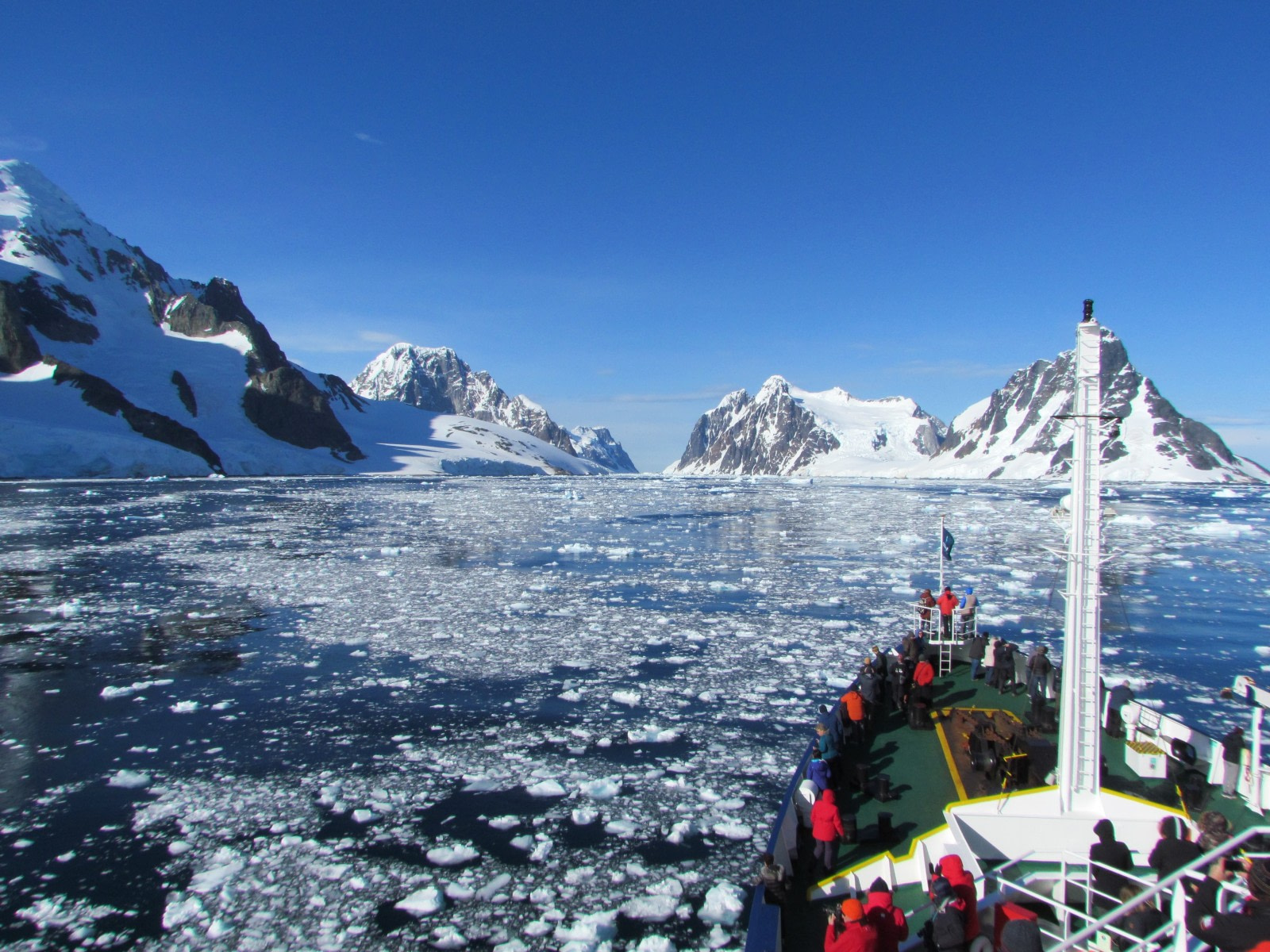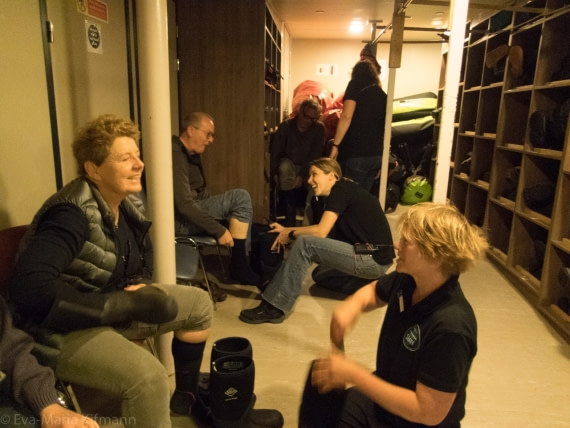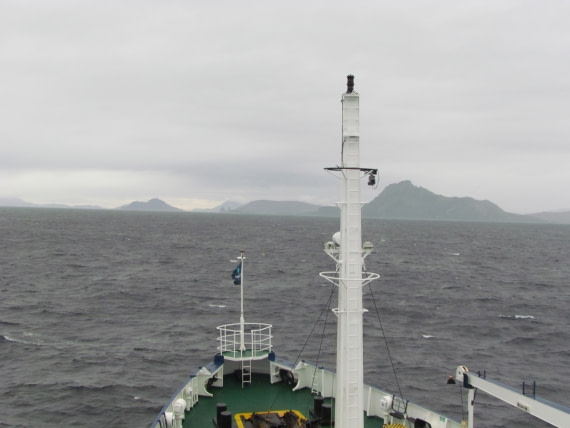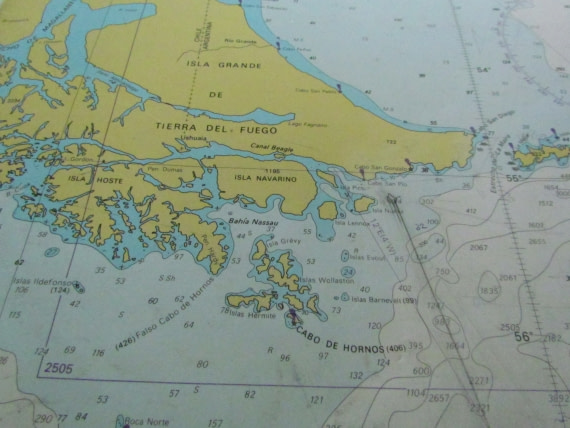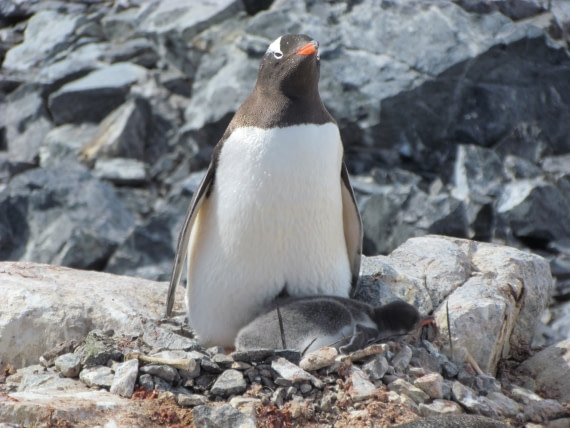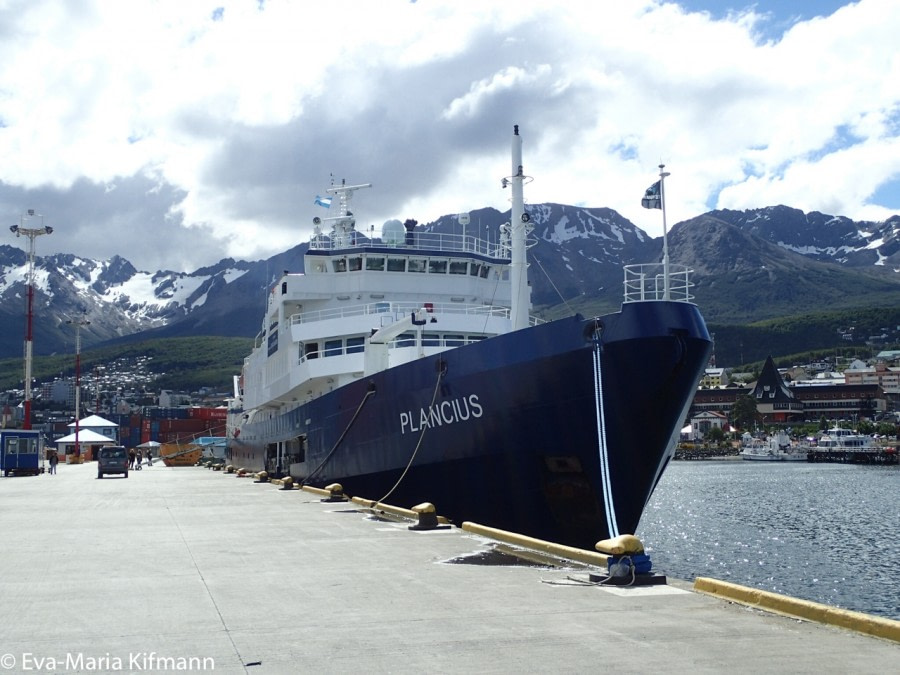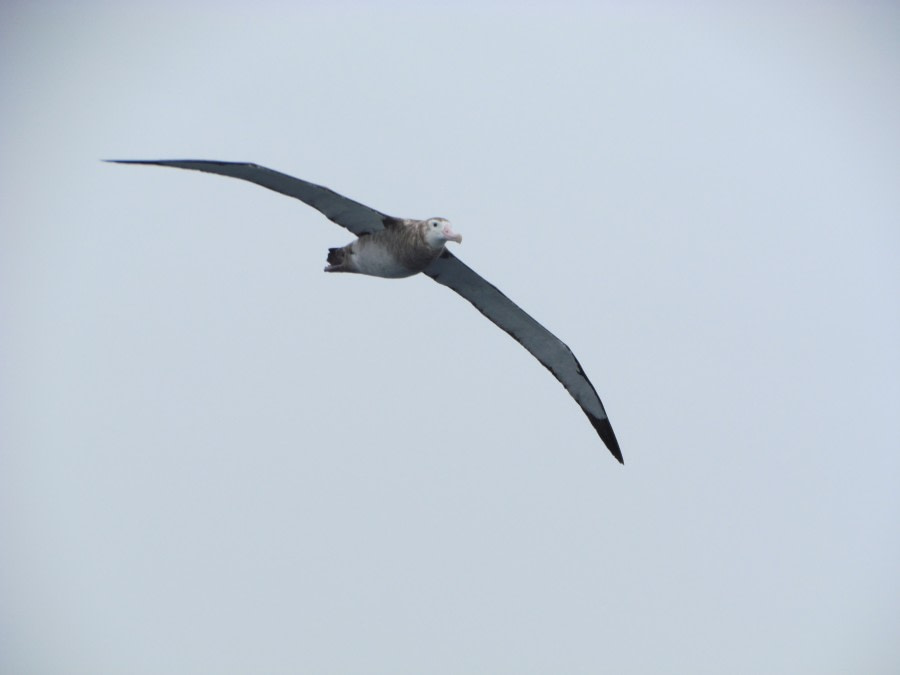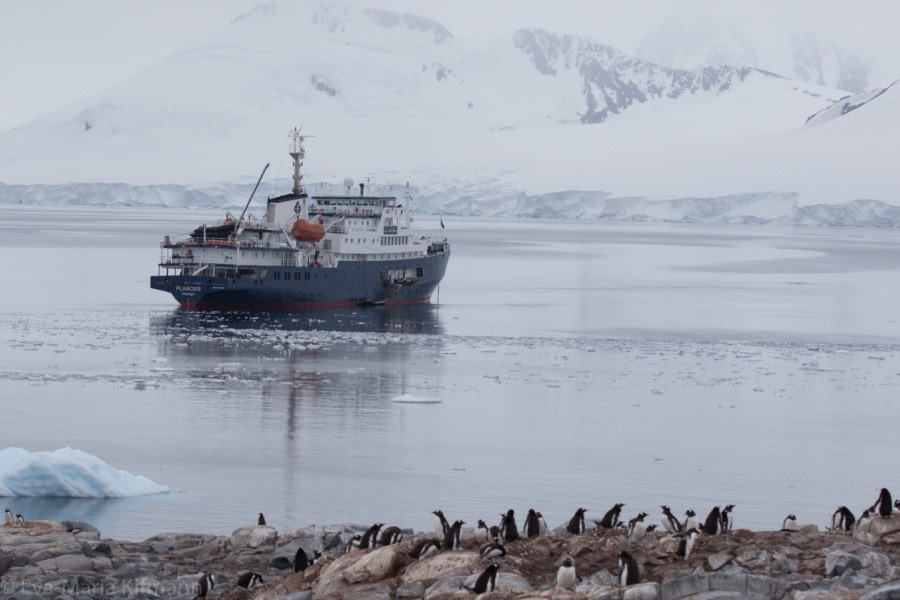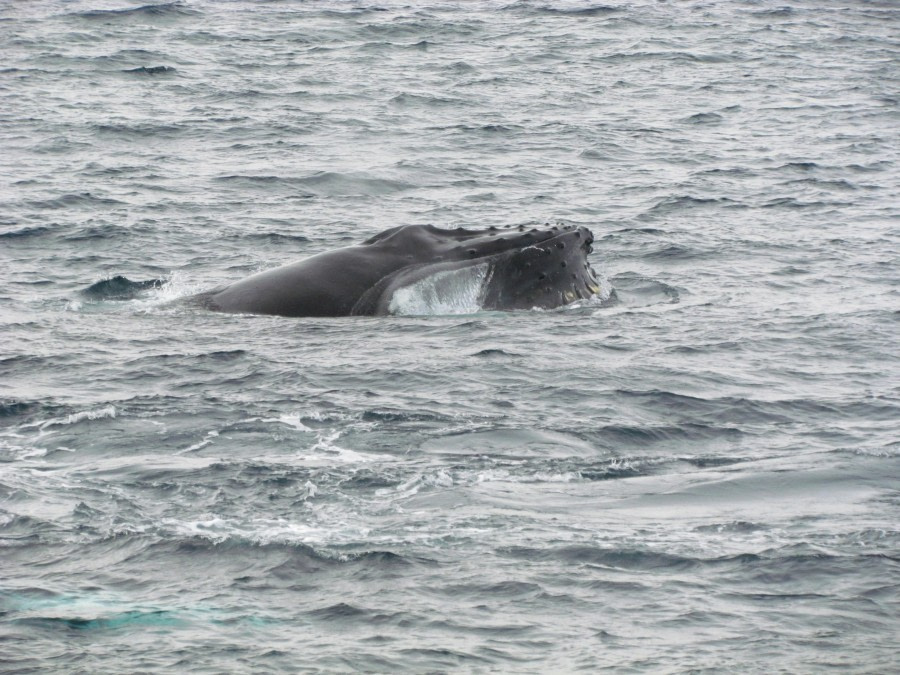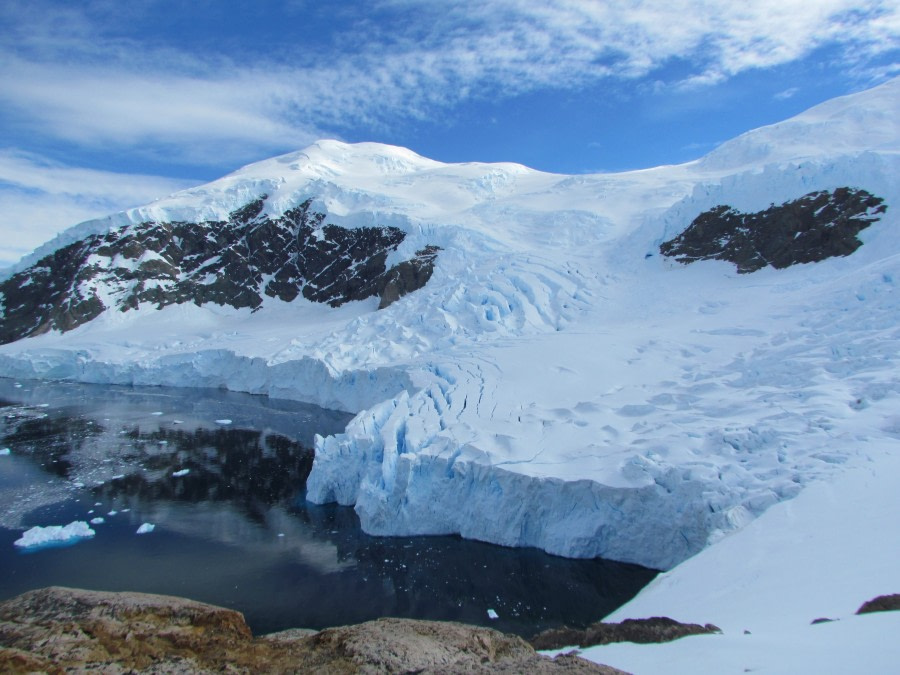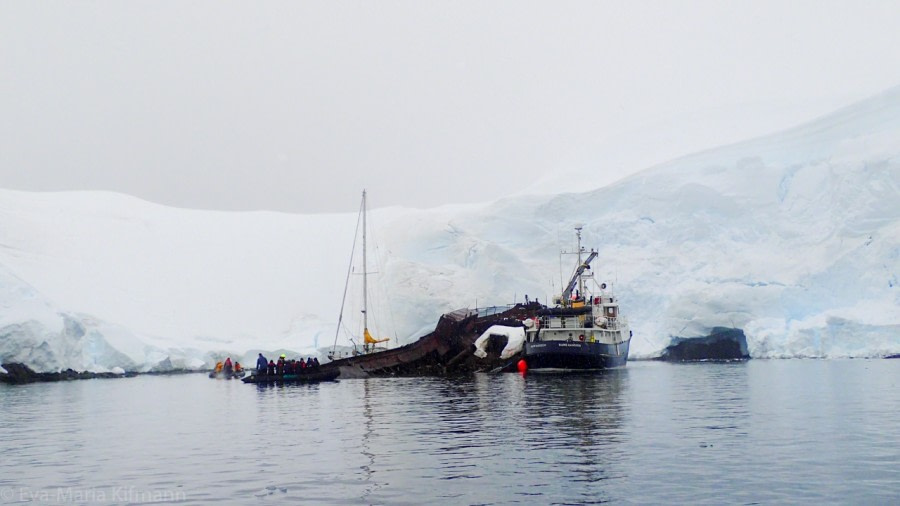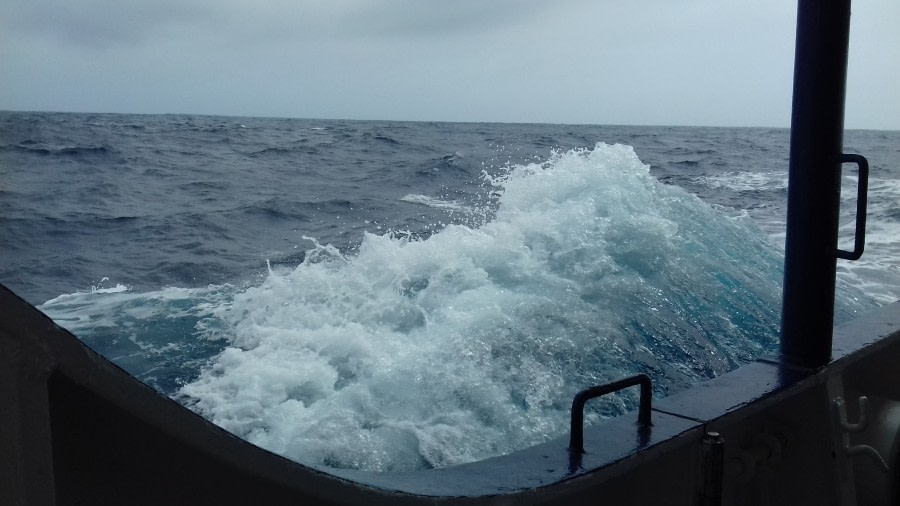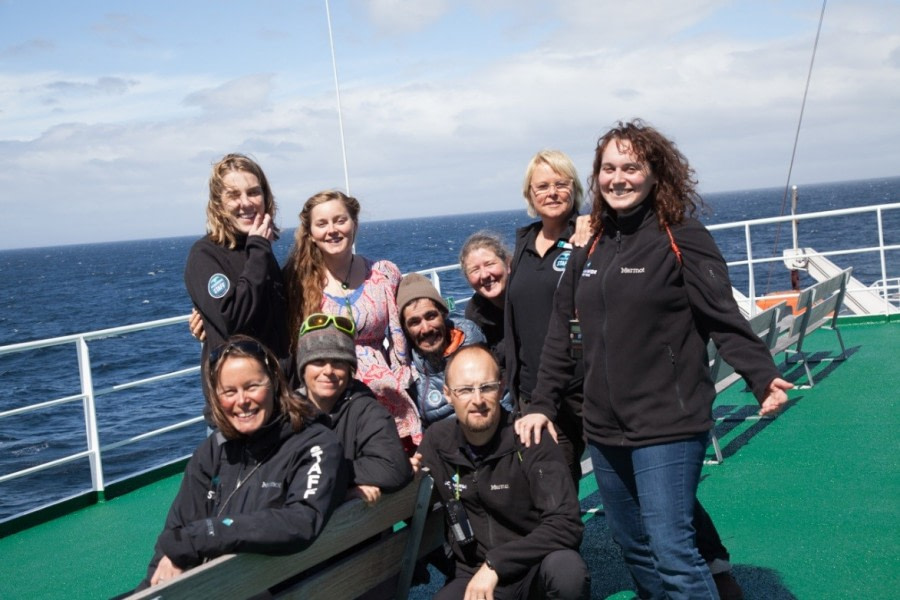| Fecha: |
13.01.2018 |
| Posición: |
65º 00’ S / 063º 49’ W |
| Viento: |
N 1 |
| Clima: |
Clear |
| Temperatura del Aire: |
+4 |
In the early hours of the morning, while most of the ship was still sleeping, the campers had a 4:30 wake-up call. They packed up their camping gear, filled in their sleeping holes that they had dug the night before and their Zodiac drivers arrived at 5am to bring them back to the ship for a hot shower and a warm bed. An amazing experience to camp in Antarctica. While not quite as early as the campers, the rest of us also got an early start to our day and were woken up to sunny, blue skies and beautiful views at the entrance to the Lemaire Channel.
After breakfast we all headed out on deck as we ship cruised through the Lemaire Channel. At the entrance, almost as a gateway to the channel itself stands Cape Raynard with its twin peaks topped with a layer of snow. Every second brought a different view of icebergs and mountains, it was absolutely stunning. Several of the icebergs we passed had one or two Crabeater seals, one iceberg even had a Gentoo penguin running around and falling down amongst two Crabeater seals. Many of us were speechless as so many fantastic shapes appeared before us. After an excellent start to our day we headed on for our morning landing at Port Charcot, passing by some incredible icebergs which have been stranded in what is known as the iceberg graveyard. The area is very shallow and the currents bring the icebergs into the bay where they cannot drift back out again. Here they will stay until they finally break up and melt.
After a brief warm up inside, we all layered up in preparation for the landing. We were eager to get to shore at the historic Port Charcot. Once on shore some people went on the hike that Ali led up to a summit and the historic cairn while the rest of us enjoyed our time amongst the colonies basking in the sunshine on the rocks and meandering down to the beach on the other side of the landing site. The cairn itself was built by Jean Baptiste Charcot, a French explorer who overwintered here in 1902. He buried a container which had a draft of all his scientific findings from the expedition and his plans for further travel, if he was unable to return for any reason. The views from the top of the peak were stunning and everyone enjoyed just sitting in the sunshine and taking it all in.
Along at the penguin colonies we were all able to watch the Gentoo penguins in their loud calling, flipper flapping and pebble stealing glory. The island is home to three species of penguins, the Gentoos, a small number of Chinstraps and a few Adelies. Those of us who walked a little higher up the slope were lucky enough to see all three species at once. It was a fabulous morning with plenty of time to just sit and watch and soak it all in. There were all smiling faces as we returned to the ship for a lunch and a bit of a rest.
During lunchtime we made the very short navigation around the coast to Petermann Island. Again this was a location for an expedition by Charcot who overwintered here in 1909 on his ship the Pourquais Pais. As we approached the shore we could see a red building, which is an Argentine refuge hut although now in a very poor state of repair. Just nearby is a memorial cross to three members of the British Antarctic Survey who sadly disappeared while crossing the sea ice nearby in 1982 and were never seen again.
The island is home to both Gentoo and Adelie penguins nesting. You could find the Gentoo penguins nesting just next to the Adelies’ so it was easy to compare the features, noises and even the smells. The Adelie chicks were a bit bigger than the Gentoo chicks and also they were a solid grey/brown whereas the Gentoos already had the patterns and colouring of full grown Gentoos.
Those of us who walked down the find the Antarctic cormorants saw Gentoo, Adelie and cormorants all nesting right next to each other. Many of us spent a great deal of time in one place enjoying these amazing birds. And after some time with the penguins quite a few of us went for a lovely walk up and along the hill and had an amazing view of the other side of the island. One of the best parts about the landing is that we could stay in any one place as long as we wanted and truly enjoy our surroundings.
Back on board we had a brief recap of the day and Ali told us about Weddell and Crabeater seals while sharing some very nice, often adorable, photos of these seals. Lynn also told us about our plans for the next day.
After another delicious dinner it was time to head back outside to enjoy our second trip through the Lemaire Channel. It was just as beautiful as our morning cruise though, possible even more so with the lower sun and excellent lighting. Captain Alexey had some fun we all enjoyed and expertly navigated the ship through a field of ice in the middle of the Lemaire. Larger icebergs were avoided and middle sized and small ones were pushed out of the way by the ship, creating a very satisfying sound and cheers from the bow. It was hard to head to bed with such magnificent views but after such a full day in Antarctica many of us were happy to head to sleep. The campers from the night before were especially grateful for the luxury of a warm bed and an indoor toilet. As we slept the ship travelled North towards our next days adventure.
Kayaking
Port Charcot
Carol decided not to paddle this morning as she had been camping the night before and wanted to get a more relaxed start to the day. This meant that we were down to 13 in number and Ross had a chance to paddle a single kayak which he took to like a penguin to water. We had fabulous weather sailing down Lemaire Channel which no-one wanted to miss so we rushed to change and get to the kayak deck once we had turned the corner towards Port Charcot. We decided to head round to the other side of Port Charcot to get away from the Zodiacs, ship and shore parties and once round the corner looking north from Booth Island we had a fabulous array of peaks of Anvers Island and the wide blue sea out west. Ali pointed us in the direction of a crab eater seal she could see on an ice floe from her vantage point at Port Charcot – we paddled over to it only to discover it was in fact a leopard seal who took a look at us and went back to rest. What amazing beasts they are. We practiced a few skills like doing tight turns and back paddling – always a useful skill when trying to avoid crashing into ice bergs and other kayaks.
Peterman Island
We had a small dedicated team this afternoon as we didn’t have the time to do a landing as well as kayak. We did however get to see two Adélie penguins so the penguin “tickers’’ were satisfied – and we also paddled all the way round Petermann Island. The far side was really quite interesting – huge bergs pushed up against the shore meant we couldn’t hug the coast and had to paddle further out on the swell. Coupled with a bit of ‘’clapotis’’we had a slightly bumpier ride that we had in the last two sessions but everyone coped extremely well. The other thing we noted earlier in the trip was the abundant moss and lichen on the north and west facing steep slopes; and the evidence of volcanism, huge boulders in an ash matrix, and basalt dykes cutting the rock layers. Really amazing weather again and a very happy bunch of Aussies at the bar tonight.
